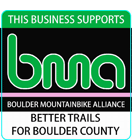The Big Jump to 24 Hour Racing
/printed in Re-written from 7/1/04 Ultra Marathon Cycling Association
You’ve tackled centuries and double centuries on your road bike. You’ve even tried a century mountain bike race. Now you’re ready for the PHD of mountain bike ultra events. The 24 hours of solo soul searching pride.
24 hour mountain bike racing has become so popular you can practically find one of these events in your very own back yard. With the help of this article you can get some of the most important information needed to get into your first 24 hour mountain bike race.
I used to try to attempt 24 hour mountain bike races with the bare minimum of equipment and crew. I found that this technique only accomplished more stress for myself and also for my crew. As I did more and more 24 hour events, I found that the more crew I could rally for the cause and the more equipment I could bring, the more I could be prepared for anything that could and would happen in a 24 hour race.
I would never attempt to solo a 24 hour mountain bike race without at least 3-4 very close family and/or friends by my side. Without my crew to support me every step of the way, I would never have been able to achieve the wins I have had over the past few years. In fact, I actually prefer as many very close friends as I can get to help out and often this allows for shift changes during the entire race. The media has described my crew as comparable to an "Indy race car pit crew". Just the way I like it.
Pick a crew that can stay happy and cheer you on when the weather and your mood head south. Organized and jovial are two attributes that come to mind for good crew members. You want crew members in charge of your food and liquid intake, clothing changes, light and battery preparation and stat times in relation to other racers.
At most 24 hour events you see many soloists racing with at least 2 mountain bikes. I have been able to win several mountain bike 24 hour events with just one bike. I feel it is quite possible to keep up with the leaders with one bike as long as you have two sets of wheels, several critical drive train spare parts, a full mechanics tool box with all appropriate tools, spare cables and bolts, good lighting equipment with several extra spare batteries and bulbs and a well tuned taken care of bike before you start your race.
I cannot stress enough how important it is that you test all of your equipment, both bike and lights, before you get to the race start. It is also a great way to see if your crew is ready for the job ahead. This equipment check can be done with a moderate night ride with your friends and crew.
Clothing choices are important and I always bring more clothing then I ever can imagine using. I have been known to bring as many as 10 pairs of winter warm gloves to a 24 hour race. I have raced 24 hour races in Italy where the weather was supposed to be 80 degrees and sunny and I started the event in hurricane like rain and wind so horrible that I had every bit of winter-like clothing I brought. Bring the type of clothing that can be layered on top of each other so that you can change it quickly. Any weather conditions can and usually do happen. Be prepared for anything and you will out last the racers that didn’t bring enough changes of clothing.
Nutrition choices are a very individualized subject and by the time you enter a 24 hour race you will have tried many different foods. Part of your bike training is also a way to find out what food choices work for you while sitting on your bike.
You must practice eating and drinking in similar situations to the distance, terrain and weather conditions simulating your 24 hour race. Remember to eat enough calories to replace what you are burning. Eat at frequent intervals and try not to eat large meals but small snacks as you go. I would not recommend trying different foods and liquids during an ultra endurance race but eat the food you have tested in other ultra events and on hard training rides. I usually have all of my energy bars (Clif Bar and Shot Bloks) available,including some solid foods like fig bars and cut up turkey sandwiches cut up and ready to eat on the go.
Mountain biking is bumpy, dusty and possibly muddy. Practice using a hydration pack on your back with water or an electrolyte drink (Accelerade) in the fluid reservoir. You must have something more than plain water, either in your bottles or in your hydration pack. Studies show that fluid loss of just 1 percent of your own body weight can lead to dehydration problems. You perspire more than just water so you must replenish with electrolyte drinks.
Many of the skills of doing a double century or riding your bike for 10-12 hours in consecutive days has prepared you for this 24 hour event. All of these training rides and races have allowed your upper body muscles and your legs to become accustomed to the bumping of mountain biking.
Along with your daylight training rides,try at least one over night training ride with lighting equipment about 6-8 weeks before the 24 hour race. This will allow for any last minute changes and is a great way to test out all equipment, food choices, and crew members.
Once race days is here, have your crew set up as much of your pit area as they can without having you there. Have them set up your food coolers, clothes and spare parts. This will keep you calm and relaxed. You can come and add your touch after you have had a great meal and short pre-ride of the course. Remember, you are racing for 24 hours you only need a 20-30 min easy ride to loosen up your legs and help you stay relaxed.
All racers are nervous on the start line. It’s a good thing to have anticipation. Everybody relaxes and settles into rhythm after the first hour or so. Do not allow yourself to start too hard. Keep a good steady aerobic pace and remember to enjoy the experience.
A few recommended 24 hour races: 24 Hours of Adrenaline, Montezuma's Revenge, 24 Hours of Finale (Italy), and the the 24 Hour World Solo Championships.




